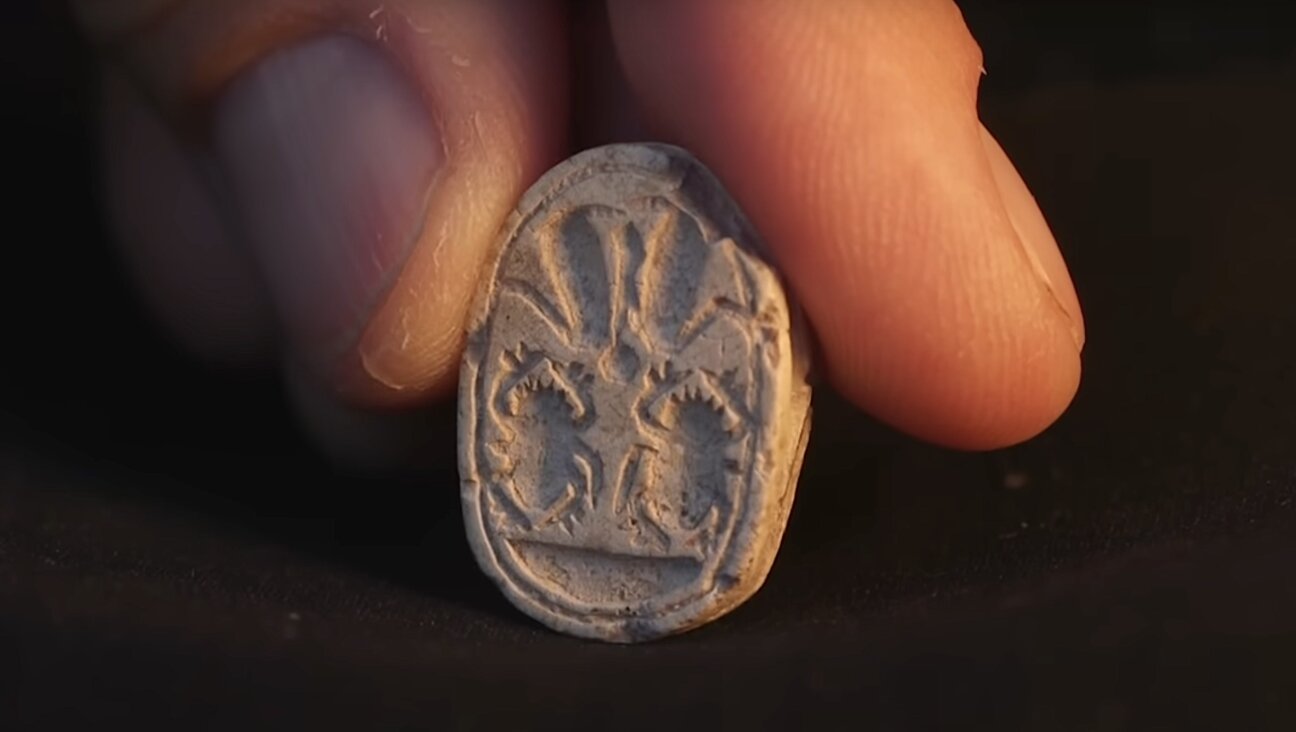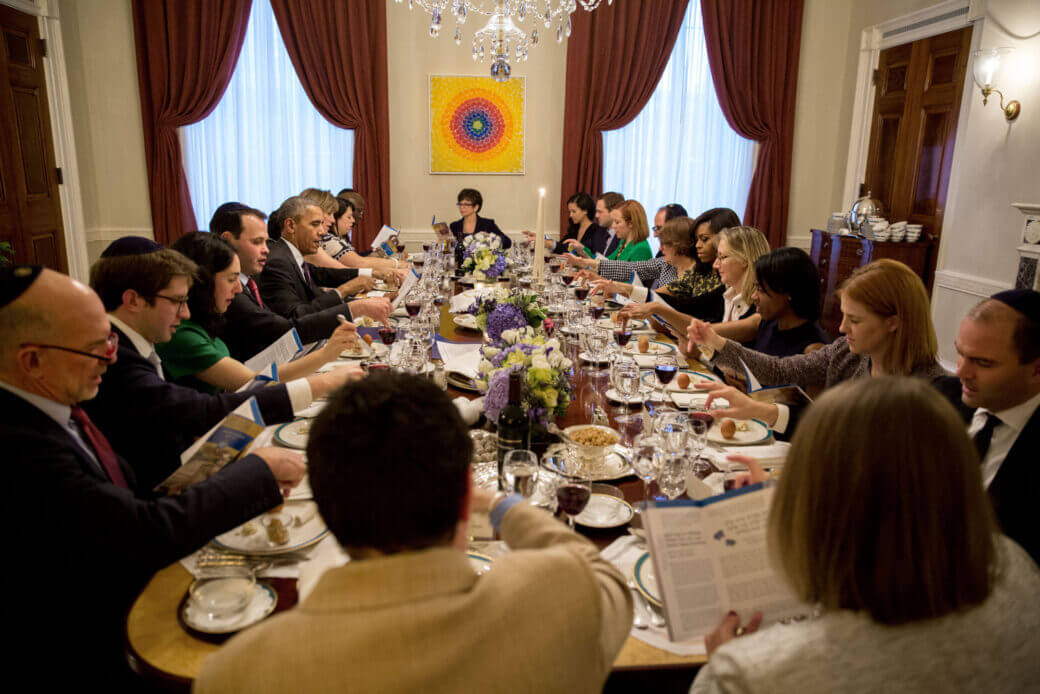Camondo Splendor

From Turkey to France: Count Abraham- Salomon de Camondo and his grandson, Nissim de Camondo, sitting together in Paris, about 1868.

Really Grand: The Main Study (?le grand bureau?) from the Moïse de Camondo House, Paris. Image by Images courtesy of archIves du musée nIssIm de camondo / photography Jean-marIe del moral
The fate of the Camondo family illustrates just how perilous it can be to be generous to the people of France. An exemplary exhibit, The Splendour of the House of Camondo: From Constantinople to Paris, 1806–1845, which opened November 6, 2009, at Paris’s Musée d’art et d’histoire du Judaïsme (Museum of Jewish Art and History) and continues until March 7, demonstrates the limits of how much 20th-century Europe’s Jewish outsiders could become insiders. Accompanied by a luxuriant catalog, “The Splendor of the House of Camondo” presents the destiny of a family, originally from Spain, that accumulated a banking fortune after being expelled to Turkey and then Italy and finally, in 1868, opting to settle in France. Their descendants, the last of the Camondos, were deported from France during World War II and murdered at Auschwitz.
This tragic fate is expressed in the shadowy, highly theatrical photographs included in the current exhibition, taken by gifted Tel Aviv-based Israeli photographer Tali Amitai-Tabib, a native of Kvutzat Kinneret. Amitai-Tabib’s images show one of the Camondo family’s biggest gifts to France, the Musée Nissim de Camondo a palace on the rue de Monceau stuffed with splendid 18th-century furniture and other decorations, of which perhaps the most touching are exquisite tiepins presented to Nissim de Camondo by his American mistress. (Confusingly, the Musée Nissim de Camondo is named not after this gentleman, but rather his great-nephew, also named Nissim, who died heroically in the First World War. Marcel Proust, a family friend and, by some accounts, an ex-lover of the younger Nissim, sent a sympathy note.) The aforementioned tiepins, which include an amusing one of a little mouse running up a fork toward a pearl, are proof that the Camondo family was loved by some, an important reminder amid the typically Gallic bile that seems to have surrounded most of the family’s philanthropy.
In 1911, at his death, Isaac de Camondo, (born in Paris in 1851), a bon vivant, amateur composer and avid collector, bequeathed a massive number of great Impressionist and post-Impressionist paintings to the Musée du Louvre (dozens of which are now on view at the Musée d’Orsay. These include seven Manets, 14 Monets and five Cézannes — all masterworks and, even at the time he purchased them, high-priced treasures. To ensure that the doors of the archconservative Louvre would be opened to these artists, some of whom, like Degas, Renoir and Monet, were still living at the time, Isaac added a hefty donation to pay for their “installation.” Even so, after this staggering gift, the Louvre refused to accord Isaac a place on its Acquisitions Committee, on the grounds that he was a “foreigner.”

From Turkey to France: Count Abraham- Salomon de Camondo and his grandson, Nissim de Camondo, sitting together in Paris, about 1868.
Similarly, denizens of the Parisian art world — even dealers who profited from him, like the noted Ambroise Vollard — badmouthed de Camondo, and in 1920 the witty art writer Félix Fénéon published the otherwise innocuous Isaac’s supposed reply to a potential blackmailer: “Monsieur, I have been accused of killing my father, raping my sister, plundering banks, and signing musical scores really composed by desperate hacks. If you can accuse me of something new, I will open my wallet. Most of all, don’t expect to triumph by claiming I understand nothing about painting. I am often reproached for that.”
Despite such repeated reproaches, Isaac not only understood French painting, but was also a discerning collector of Asian art, hundreds of pieces of which he also donated to the Louvre. Now on display at Paris’s Musée Guimet, these include a delightful Chinese bronze wine vessel in the form of an elephant. Unlike the average fin-de-siècle collector of Asian art, Isaac did not just covet famous Japanese printmakers like Hokusai, but also the rarer and more mysterious Sharaku. Just as when he obliged the unwilling Louvre to accept living artists, Camondo also strove to make lesser-known Asian creators into establishment figures, thereby making outsiders into insiders and recognizing the value in presumed outsiders, as well.
Isaac’s slightly younger cousin Moïse de Camondo was a no less passionate collector, and built and furnished what is now the Musée Nissim de Camondo in imitation of the Petit Trianon, a famous 18th-century royal hangout for the likes of Madame de Pompadour and Marie Antoinette. The almost suffocating bourgeois grandeur that resulted has something to do with turn-of-the-century arch-voluptuousness epitomized by the fictional esthete Des Esseintes in Joris-Karl Huysmans’s novel “Against the Grain (À Rebours)”. Yet, the Camondo family still seemed to go against the grain in France, despite their insistent generosity. So aware were they of their outsider status that they took no public stance during the Dreyfus Affair, and collected works by Degas, despite that artist’s notorious antisemitism. Isaac, a devoted Wagnerian, even made a pilgrimage to the first Bayreuth Festival, in 1876.
While they were generous donors of liturgical art to the Sephardic synagogue on the rue Buffault, only occasionally were the Camondos seen worshipping there. Clearly a secular, assimilated family in their own minds, the Camondos were nevertheless named to the Paris Consistory, which administered Jewish religious matters, out of respect for their standing in the Jewish community.
As for their status among non-Jews, Moïse’s daughter Béatrice de Camondo was an obsessive horsewoman who implicitly trusted in her upper-crust riding friends. She continued to compete in equestrian events even after the Nazi Occupation of France, and was eventually deported to her death, along with her young son and daughter and her ex-husband Léon Reinach. So much for French equestrian friends.
“The Splendor of the House of Camondo” concludes with a wide selection of documents from the time of the German Occupation, including a Gestapo file entry dated March 24, 1943, which states that Reinach “possesses typical Jewish characteristics (crooked nose, thick lips, and circumcised, and apparently unreligious). Moreover, he behaves in [Drancy detention camp] in an insolent and pretentious manner, and we recommend that he and his family be assigned soon to one of the transports of Jews.”
The apathy toward the fate of these arch-patriots — if not antisemitic vitriol aimed at them — by France’s society and government made more than one French visitor to this exhibit react angrily. Art critic Philippe Dagen wrote acidulously in the newspaper Le Monde: “This is how the French government expressed its gratitude to the descendants of those who had overwhelmed it with priceless donations.”
Watch a French-language presentation of Paris’ Musée Nissim de Camondo made on the occasion of the exhibit:
Benjamin Ivry is a frequent contributor to the Forward.
The Forward is free to read, but it isn’t free to produce

I hope you appreciated this article. Before you go, I’d like to ask you to please support the Forward.
At a time when other newsrooms are closing or cutting back, the Forward has removed its paywall and invested additional resources to report on the ground from Israel and around the U.S. on the impact of the war, rising antisemitism and polarized discourse.
Readers like you make it all possible. We’ve started our Passover Fundraising Drive, and we need 1,800 readers like you to step up to support the Forward by April 21. Members of the Forward board are even matching the first 1,000 gifts, up to $70,000.
This is a great time to support independent Jewish journalism, because every dollar goes twice as far.
— Rachel Fishman Feddersen, Publisher and CEO
2X match on all Passover gifts!
Most Popular
- 1

News A Jewish Republican and Muslim Democrat are suddenly in a tight race for a special seat in Congress
- 2

Fast Forward The NCAA men’s Final Four has 3 Jewish coaches
- 3

Film & TV What Gal Gadot has said about the Israeli-Palestinian conflict
- 4

Fast Forward Cory Booker proclaims, ‘Hineni’ — I am here — 19 hours into anti-Trump Senate speech
In Case You Missed It
-

Fast Forward Jerusalem Post editor Zvika Klein, arrested in ‘Qatar-gate,’ says he’s being unfairly prosecuted for his reporting
-

Fast Forward Trump fires national security officials, reportedly at urging of Laura Loomer, far-right Jewish ‘Islamophobe’
-

Fast Forward Display honoring Jewish women graduates of naval academy removed ahead of Hegseth visit
-

Yiddish טשיקאַוועסן: מיידעלע געפֿינט 3,800־יאָריקע קמיע לעבן בית־שמש, ישׂראלTIDBITS: Little girl finds 3,800-year old amulet near Beit Shemesh, Israel
אַן עקספּערט פֿון פֿאַרצײַטיקע קמיעות האָט באַשטעטיקט אַז די קמיע איז געלעגן אויפֿן אָרט פֿונעם אַמאָליקן לאַנד כּנען.
-
Shop the Forward Store
100% of profits support our journalism
Republish This Story
Please read before republishing
We’re happy to make this story available to republish for free, unless it originated with JTA, Haaretz or another publication (as indicated on the article) and as long as you follow our guidelines.
You must comply with the following:
- Credit the Forward
- Retain our pixel
- Preserve our canonical link in Google search
- Add a noindex tag in Google search
See our full guidelines for more information, and this guide for detail about canonical URLs.
To republish, copy the HTML by clicking on the yellow button to the right; it includes our tracking pixel, all paragraph styles and hyperlinks, the author byline and credit to the Forward. It does not include images; to avoid copyright violations, you must add them manually, following our guidelines. Please email us at [email protected], subject line “republish,” with any questions or to let us know what stories you’re picking up.
















